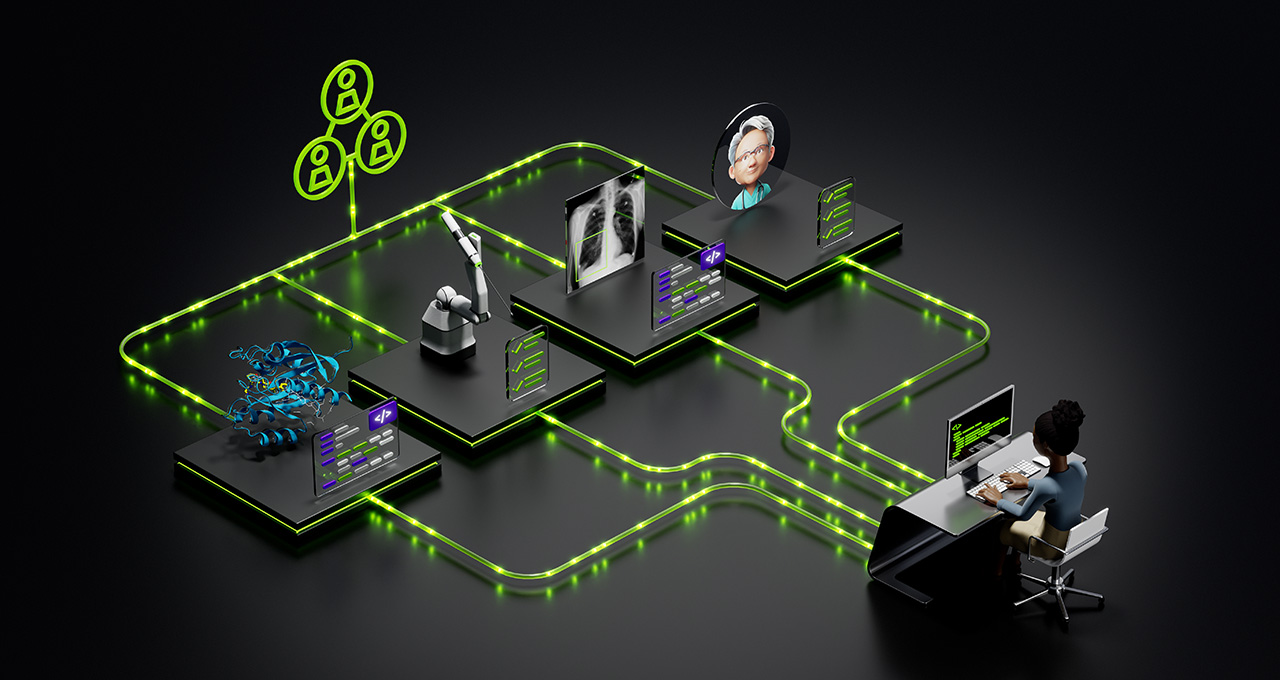
What You Should Know:
– NVIDIA today unveiled a massive expansion of its healthcare AI initiatives, rolling out new open models as part of the NVIDIA Clara platform and announcing foundational partnerships with industry giants like Lilly and Innovaccer.
– These advancements are set to accelerate scientific discovery, transform complex surgical procedures using digital twins, and embed real-time intelligence into clinical and operational workflows.
Pharma 4.0: Lilly Builds World’s Largest AI Factory
Lilly, already recognized as the No. 1 most AI-ready pharma company, is deploying the world’s first NVIDIA DGX SuperPOD AI factory wholly owned and operated by a pharmaceutical company.
- Immense Computing Power: Built with 1,016 NVIDIA Blackwell Ultra GPUs, the AI factory delivers over 9,000 petaflops of AI performance, which is poised to compress drug discovery timelines and enable breakthroughs in personalized medicine and genomics at industrial scale.
- Drug Discovery and Development: The AI factory will be used to train large-scale biomedical foundation models. Select models will be made available on Lilly TuneLab, which is now the first drug discovery platform to offer both Lilly and NVIDIA Clara open foundation models.
- Digital Twins for Biomanufacturing: Lilly is leveraging NVIDIA Omniverse to create digital twins of its manufacturing lines. This allows teams to model, stress-test, and optimize entire supply chains before making physical changes, accelerating quality assurance and getting medicines to patients faster.
- Economic Impact: This initiative is a cornerstone of Lilly’s $50 billion commitment to expand its U.S. manufacturing and R&D footprint, poised to create 13,000 high-wage manufacturing and construction jobs.
Surgical and Imaging Innovation with Physical AI
NVIDIA is extending its AI into the operating room and imaging suite to solve operational strain and complex diagnostic challenges.
- Robotics Simulation for Surgery: Johnson & Johnson MedTech is using NVIDIA Isaac for Healthcare and Omniverse to advance the MONARCH Platform for Urology. Teams use virtual environments to simulate device setup and patient interaction, optimizing layout and ergonomics. Digital twin simulation can compress design reviews that once took months into hours.
- Agentic AI for Radiology: GE HealthCare is developing an agentic AI diagnostic imaging assistant integrated into devices to address the critical shortage of radiologists. It will process scans, allow interaction via natural language, and create interactive reports, leveraging LLMs, VLMs, and agents.
- Incidental Findings: GE HealthCare is piloting an agentic AI solution to detect and report incidental findings in CTs (which occur in over 47% of abdominal CTs). The AI will identify high-risk lesions and recommend follow-up imaging, with the radiologist retaining full control.
Open Models and Data Ecosystems
NVIDIA is accelerating open science and practical AI deployment through new models and partnerships focusing on data integrity and accessibility.
- Open Models for Discovery: NVIDIA is rolling out open models like CodonFM (codeveloped with Arc Institute, used by Stanford RNA Medicine program) which learns the rules of RNA to improve therapeutic design. Another model, La-Proteina, creates 3D protein structures atom by atom at double the length and faster than previous models.
- Explainable AI (XAI) in Radiology: Clara Reason, a vision language model, advances explainable AI. The NIH is integrating Clara Reason models into radiology workflows to aid report drafting and support clinician training.
- Multimodal AI Integration: Innovaccer has adopted NVIDIA’s full-stack AI platform, including NeMo Guardrails and Triton Inference Server, to accelerate speech, text, and multimodal intelligence across healthcare workflows. This forms the foundation for Innovaccer’s Agents of Care™, which automate repetitive tasks using multimodal data for greater speed and accuracy.
- Data Efficiency: GE HealthCare is conducting research into energy-efficient neural networks for tomographic imaging, with early results showing a reduction in reconstruction iterations from 40 to just six, lowering computational power needs.
